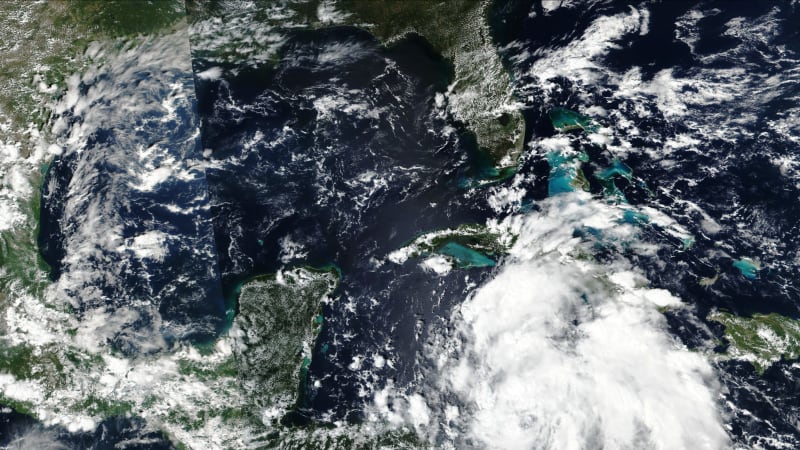Gas prices: Keeping an eye on Hurricane Ian

Check out Autoblog’s Cheap Gas Prices Near Me finder tool
It’s a common phenomenon: When a hurricane hits the Gulf Coast, gas prices usually rise. Why? That’s simple, half the nation’s petroleum and natural gas refinery capacity is there. But Hurricane Ian might thread the needle: Currently near Cuba and the Cayman Islands, it’s projected to make landfall on the Florida West Coast or Panhandle on Thursday. There are just a couple of refineries near Tampa — and so even though people are surely gassing up to get the heck out of there, gas prices so far are paradoxically falling.
AAA reports that Floridians are paying 4 cents a gallon less than last week, with the average for regular unleaded at $3.38.
Nationwide, the average price is $3.72, which is up 5 cents in the same period.
The factors controlling gasoline prices are many, of course, and so an impending hurricane is not, at least in this case, pushing prices up because the petroleum marketplace is worried about something else that’s almost as scary as a hurricane: the risk of recession.
“There’s actually downward pressure on pump prices, despite the forecast that a hurricane would approach Florida this week,” said AAA spokesman Mark Jenkins. “Gasoline and oil futures prices plunged 7% last week, to 8-month lows on concerns that aggressive interest rate hikes by the U.S. Federal Reserve could trigger an economic recession.
“Since Tropical Storm Ian is not projected to impact the refineries in Louisiana, Mississippi and Texas, it’s unlikely that the storm itself or the resulting demand, would cause pump prices to spike,” Jenkins said.
AAA does say that Ian could, of course, disrupt gasoline supply chains, which could lead to Florida stations running out of fuel. Gasoline arrives by tanker from the other Gulf states and is offloaded in Florida ports to trucks, which take it to filling stations. But even if temporary scarcity sets in, AAA points out that price-gouging laws would prohibit station owners from taking advantage of limited supply, requiring them to maintain a price that does not exceed what they’ve charged in the previous 30 days. Here’s AAA’s full take on the Florida situation.
As for the rest of us, that $3.72 national average being reported today by AAA — though part of a long steady decline from the high of $5.01 in mid-June — is an increase of 5 cents a gallon in the past week. There were some refinery issues behind that, but the uptick might not last long depending on what the hurricane does. AAA points out that on Friday, crude prices fell below $80 a barrel for the first time since January as the market is nervous about the potential for a recession. Plus, U.S. demand for oil has slipped now that the summer vacation season is over and the kids are back in school.
“Slack demand and lower oil prices should take some pressure off rising gas prices,” said Andrew Gross, another AAA spokesman. “But Hurricane Ian could cause problems, depending on the storm’s track, by disrupting oil production in the Gulf of Mexico and impacting large coastal refineries.”
So there you have one AAA spokesman saying the hurricane is unlikely to have an effect on gas prices, and another spokesman saying it could, if the storm’s path were to take a hard left turn.
Either way, while we’re no longer paying $5 for gas, we are, as always, at the mercy of which way the wind blows, both meteorologically and economically.



